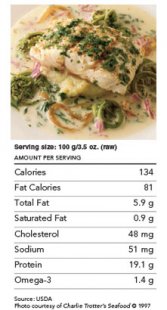
 Scientific Name: Coregonus clupeaformis
Scientific Name: Coregonus clupeaformis
Market Name: Whitefish
Common Name: Lake whitefish, inland whitefish, Labrador white fish, shad
Flavor: Mild/Moderate
Texture: Medium
Description:
The name “whitefish” can be confusing, because it is often used as a generic marketing term for many saltwater species of mild-flavored, white-fleshed fish. Further, it describes at least seven distinct species of related fish, all found in Arctic and sub-Arctic fresh and salt water. The most valuable of these is lake whitefish, Coregonus clupeaformis, which inhabits cold, deep-water lakes in the northern United States and in Canada, which is the primary producer. These silvery, small-mouthed, freshwater fish are in the family Salmonidae. Though related to salmon and trout, they have purewhite meat and are traditionally the species used for gefilte fish. Whitefish roe, marketed as golden caviar, is highly valued. Because whitefish are harvested from cold, northern waters and are not subjected to climatic heat, the quality is generally quite good.
 Product Profile:
Product Profile:
Whitefish is considered one of the best-eating freshwater fish there is. Because the fish lives in icy northern lakes, the meat has a high fat content, making it an excellent candidate for smoking. The mild flavor is more like salmon than trout. The meat is medium-firm with a large flake.
Though whitefish is a salmonid, the meat looks nothing like trout or salmon. Raw, the flesh is almost pure white, and it cooks up off-white.
You Should Know:
Whitefish harvested in winter months are usually of the best quality. The meat tends to be firmer and fatter that time of year.
Cooking Tips:
Due to a fairly high fat content, whitefish are a little more forgiving about overcooking than leaner fish. For grilling, use skin-on fillets. Whitefish can also be used in seafood chowders or salads, since the meat is solid and holds together well.
Cooking Methods: Bake, Broil, Grill, Smoke
Substitutions: Rainbow trout, Salmon
Primary Product Forms:
Fresh: Whole, dressed, Fillets, Steaks
- Play mines online
- play 1win brawl pirates tomorrow
RELATED VIDEO












